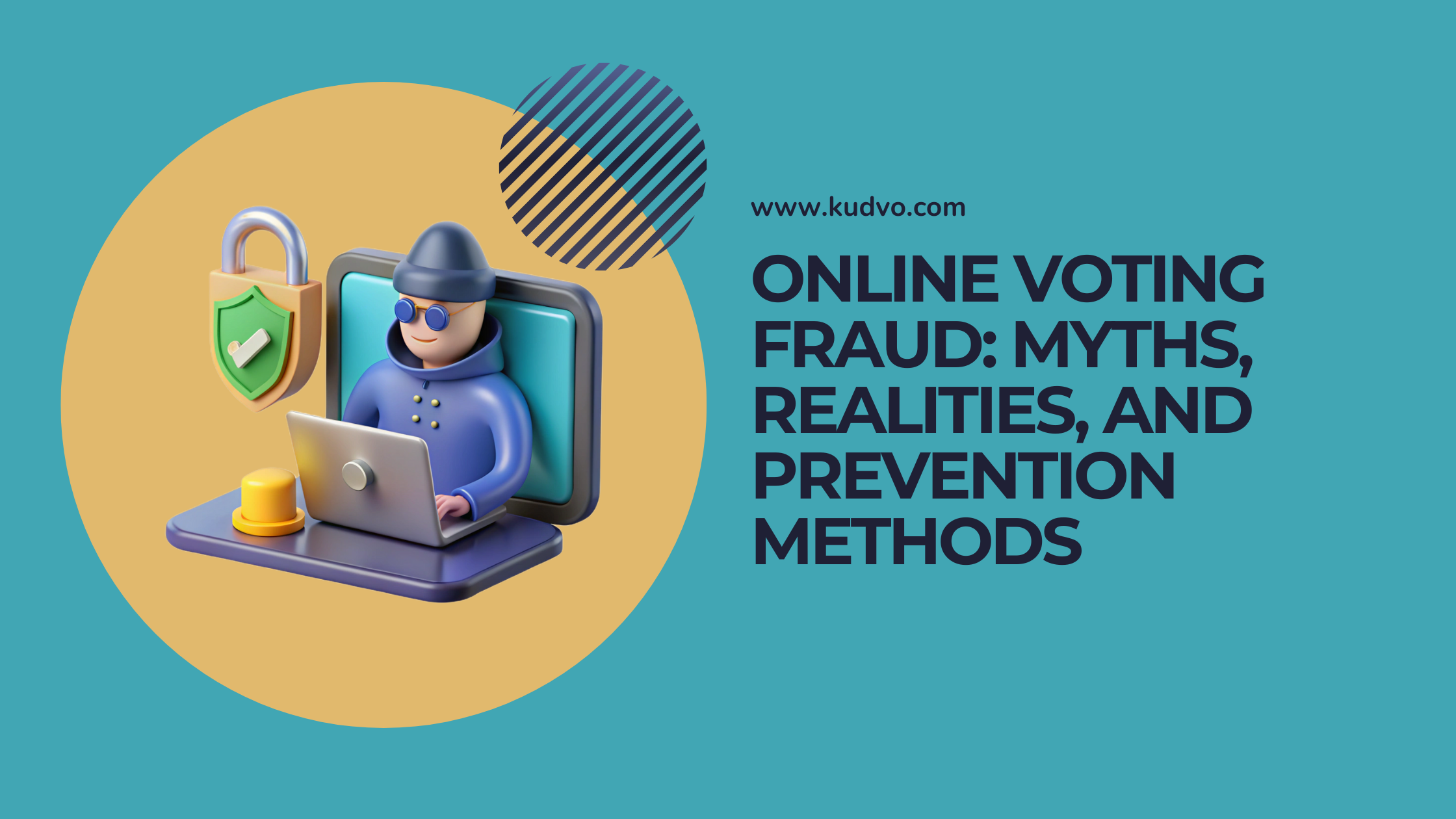Online Voting Fraud: Myths, Realities & How to Prevent It
Introduction
Can your vote be hacked if cast online? That’s one of the most asked—and feared—questions about digital elections.
As countries explore online voting, discussions around fraud, manipulation, and cyberattacks are heating up. But not everything you hear is true. There’s a fine line between myth and legitimate concern, and understanding the difference is key to building secure systems and public trust.
In this article, we’ll unpack the most common myths, reveal the real challenges, and explore effective prevention methods. Whether you’re a voter, policymaker, or tech enthusiast, this guide will give you a grounded view of the risks and how they can be managed.
Brought to you by www.kudvo.com—your hub for online voting innovation and insight.
Myths About Online Voting Fraud
Let’s start by busting some of the most widespread misconceptions.
1. "Online voting is always unsafe."
False. While any system connected to the internet has vulnerabilities, security depends on design, not just the medium. Banks, health records, and military systems operate online with stringent safeguards—voting can too.
2. "It’s easy for anyone to hack an election."
Most voting systems are not wide open to attackers. Penetrating a secure online voting platform typically requires deep system access, not just random phishing.
3. "Paper ballots are completely fraud-proof."
Not true. Paper ballots have their own vulnerabilities, such as ballot stuffing, loss, or miscounting. Every system—digital or analog—needs checks and balances.
The Real Security Risks of Online Voting
While myths exaggerate, some concerns are real and deserve attention.
1. Malware on Voter Devices
A hacker doesn’t need to attack the voting server—they can target your laptop or smartphone.
A compromised device can alter votes before submission.
Solutions: Endpoint verification, secure mobile voting apps.
2. Server-Side Attacks
If the main voting system is breached, attackers could access vote records, voter data, or manipulate results.
Solutions: Blockchain, end-to-end encryption, load balancing, and redundancy.
3. DDoS Attacks
Distributed Denial of Service (DDoS) attacks flood a system with traffic, making it unusable during voting windows.
Solutions: Cloud-based protections, content delivery networks (CDNs), and rate limiting.
4. Insider Threats
Election staff or developers could potentially manipulate systems if controls are weak.
Solutions: Role-based access, third-party audits, and activity logs.
🔍 Case Study:
In Estonia—the global pioneer in online voting—votes are cast through a secure system that’s been used since 2005. To date, no major fraud incidents have been confirmed thanks to rigorous protocols, voter verification, and independent auditing.
Proven Methods to Prevent Online Voting Fraud
Here’s how governments and tech providers are tackling the challenge:
1. Multi-Factor Voter Authentication
Go beyond just usernames and passwords. Use:
Biometrics (fingerprint, facial recognition)
Government-issued digital IDs
One-time verification codes
2. End-to-End Encryption
From casting the vote to counting it, data should be encrypted and unreadable to outsiders.
3. Verifiable Voting Systems
Let voters confirm their vote was cast and counted—without revealing their choice.
Blockchain can help create a tamper-proof record.
Techniques like receipt-based voting and zero-knowledge proofs increase transparency.
4. Third-Party Security Audits
Independent cybersecurity firms should regularly test, verify, and report on the system’s integrity.
5. Public Transparency
Publish:
Code (open source where possible)
Security reports
Post-election audits
Transparency builds trust.
Conclusion
Online voting fraud isn’t a myth—but it’s also not the doomsday scenario some make it out to be.
The reality? Like any digital system, online voting can be secure if built right, tested rigorously, and managed transparently.
With robust prevention methods like multi-factor authentication, encryption, and independent audits, we can protect digital democracy without fear. The path forward isn’t to avoid online voting—it’s to improve it.
For more insights on how tech is shaping the future of elections, visit www.kudvo.com and explore our latest guides and resources.
